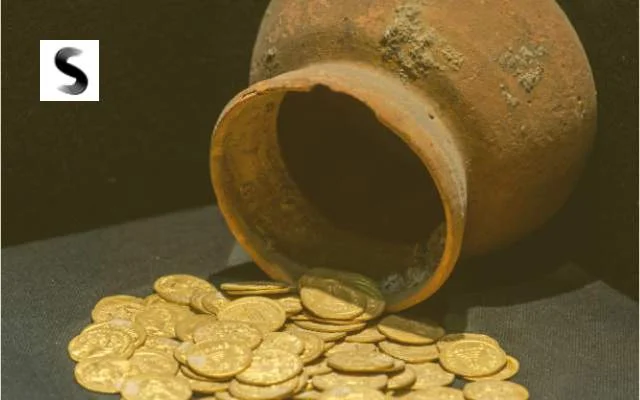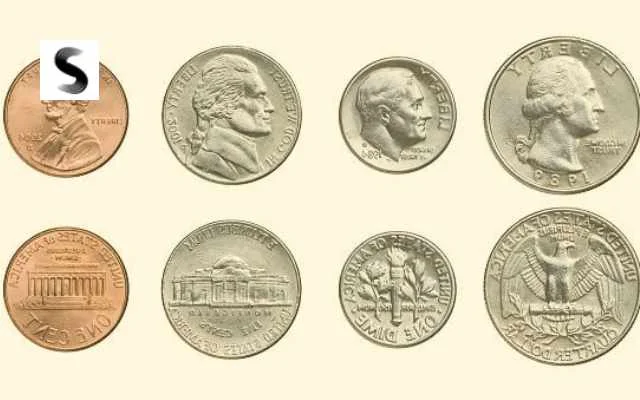Have you ever wondered how much space or weight $600,000 in pennies would take up? Although it might seem unusual, understanding large amounts in smaller denominations can be fascinating. In this article, we’ll explore the history of the penny, the math behind converting dollars to cents, and some unusual uses for pennies. So, buckle up, and let’s dive into the world of pennies!
The History of the Penny
Origins and evolution
The penny’s history dates back to the Roman Empire when it was called “denarius.” In the United States, the penny was first minted in 1793 and has undergone several design changes since then. Today, the US penny features the portrait of President Abraham Lincoln on the obverse and a shield on the reverse.
The significance of the penny in the US currency system
Pennies are vital in the US currency system as the smallest denomination. Although their purchasing power has diminished over time, they still serve as a reminder of the value of small amounts and help make exact changes.
Famous Pennies and their stories
Some pennies have gained fame due to their rarity or unique features, such as the 1943 steel cent, produced during World War II to conserve copper for the war effort.
Understanding Large Amounts in Pennies

Visualizing large numbers
Visualizing large numbers can be challenging, especially when dealing with something as small as a penny. One way to grasp the magnitude of large amounts is to break them down into smaller units or visualize them in terms of familiar objects or spaces.
Breaking down large amounts into smaller units
Converting them into pennies can make them easier to comprehend when dealing with large dollar amounts. For example, $1 is equal to 100 pennies, so $600,000 is equivalent to 60 million pennies.
Converting dollars to pennies
To convert dollars to pennies, multiply the dollar amount by 100. In our example, $600,000 x 100 = 60,000,000 pennies.
How much is 600k in pennies?
Conversion formula
As mentioned earlier, to convert dollars to pennies, use the following formula:
`Number of pennies = Dollar amount x 100`
Step-by-step calculation
- Identify the dollar amount: $600,000
- Multiply the dollar amount by 100: $600,000 x 100 = 60,000,000 pennies.
Answer and interpretation
$600,000 is equivalent to 60 million pennies.
Unusual Uses for Pennies
Art installations
Artists have used pennies to create impressive art installations, such as massive portraits or intricate mosaics, showcasing the versatility of this small coin.
Penny floors
Some people have created unique flooring designs by using pennies as tiles. These penny floors are visually striking and a testament to the potential value of small change.
Charity fundraising
Pennies can be collected for charitable causes, and the impact of millions of pennies donated by individuals can make a significant difference for those in need.
The Weight and Volume of 600,000 Dollars in Pennies
Individual pennyweight and dimensions
A US penny weighs approximately 2.5 grams and has a diameter of 19.05 millimeters.
Calculating total weight
To find the total weight of 60 million pennies, multiply the individual pennyweight by the total number of pennies: 2.5 grams x 60,000,000 = 150,000,000 grams, or 150 metric tons.
Visualizing the volume of pennies
Estimating the volume of 60 million pennies is more challenging, but if we assume that each penny occupies a cylindrical volume, we can approximate the total volume. With a total weight of 150 metric tons, you could imagine the pennies filling up several large shipping containers.
Transporting and Storing 600,000 Dollars in Pennies
Challenges and practical considerations
Transporting and storing such large pennies would require careful planning, as the weight and volume would pose significant logistical challenges.
Secure storage options
To securely store 600,000 dollars in pennies, you would need a reinforced vault or storage facility capable of handling the weight and protecting the contents from theft or damage.
Transportation methods
Considering the weight, specialized transportation methods such as large trucks or cargo containers would be required to transport 600,000 dollars in pennies.
The Environmental Impact of Pennies
The cost of producing pennies
Producing pennies requires a significant amount of resources, including metal and energy. In some cases, the production cost exceeds the penny’s face value.
Environmental concerns
The mining and refining processes for the metals used in pennies can have negative environmental consequences, such as habitat destruction, water pollution, and greenhouse gas emissions.
Potential alternatives
Some countries have phased out their lowest denomination coins or switched to alternative materials to reduce the environmental impact of their currency.
Fun Facts About Pennies
Rare and valuable pennies
Some pennies, like the 1909-S VDB or the 1955 double die cent, are highly sought after by collectors due to their rarity and historical significance.
Unique penny-related world records
Penny-related world records include:
- The giant coin mosaic.
- The highest stack of pennies.
- The longest line of pennies.
Interesting trivia
Did you know that pennies minted before 1982 were made primarily of copper, while those stamped after 1982 are composed of zinc with a thin copper coating?
Penny Collecting and Numismatics
Introduction to coin collecting
Coin collecting, or numismatics, is a popular hobby that involves collecting, studying, and trading coins for their historical, aesthetic, or monetary value.
Valuable aspects of pennies for collectors
For collectors, pennies can be valuable due to their rarity, minting errors, unique designs, or historical significance.
Tips for starting a penny collection
To start a penny collection, learn about the history and different types of pennies. You can also attend coin shows, join numismatic clubs, or visit online forums to connect with other collectors and gain valuable insights.
The Future of the Penny
Current debates on penny usage
There is an ongoing debate about whether the US should continue minting pennies, as some argue that their production cost and environmental impact outweigh their usefulness.
Proposed changes to the US currency system
Some proposals include phasing out the penny, adopting a rounding system for cash transactions, or switching to alternative materials for coin production.
Possible future scenarios
The penny’s future is uncertain, but it could involve phasing them out, transitioning to a cashless society, or adopting innovative coin production technologies.
Personal Finance and Pennies
Saving pennies as a financial strategy
Although pennies might not seem like much, saving them over time can add up to a significant amount, illustrating that “a penny saved is a penny earned.”
How pennies can add up over time
If you were to save one penny a day for a year, you would have saved $3.65. If you saved 100 pennies a day, you would accumulate $365 a year.
Tips for managing loose change
To manage loose change, use a designated container or piggy bank for collecting coins, periodically roll or exchange them for larger denominations, or use coin-counting machines.
Fun Penny-Based Experiments and Activities
Science experiments using pennies
Pennies can be used in various science experiments, such as testing the corrosive effects of different liquids or demonstrating surface tension with water droplets.
Penny stacking challenges
Try stacking pennies to see how high you can build a tower or how many pennies you can balance on their edges.
Creative uses for pennies
Pennies can be used in crafts, jewelry, or DIY projects, like creating a penny-covered picture frame or making a penny pendant necklace.
How Other Countries Handle Small Change

Different currencies and their smallest denominations
In various countries, the smallest coin denominations differ. For example, in the European Union, the smallest denomination is the 1 Euro cent coin, while in Japan, the smallest coin is the 1 yen coin.
Countries that have phased out small coins
Some countries, like Canada, Australia, and New Zealand, have eliminated their most minor denomination coins and adopted rounding systems for cash transactions.
The impact of eliminating small denominations
Phasing out small denominations can reduce production costs, streamline cash transactions, and lessen the environmental impact of coin production. However, it may also require adjustments to pricing strategies and could impact specific sectors of the economy that rely on small changes.
Conclusion
This article unraveled the world of pennies, discussing their history, uses, and significance. We also calculated that 600,000 dollars equals 60 million pennies, massive weight, and volume.
Understanding large amounts of pennies helps us appreciate the value of small change and the importance of managing our finances. It also highlights the environmental and economic factors of coin production and usage.
As we have discovered, the world of pennies is fascinating and diverse, with applications in art, science, and history. We encourage you to continue exploring this intriguing topic and to consider the broader implications of our relationship with small change.
FAQs:
Why are pennies still in circulation?
Pennies remain in circulation due to tradition and their role in unevenly making exact changes and pricing items. Dollar amounts. However, some argue that the cost of producing pennies outweighs their usefulness.
What are some alternatives to using pennies?
Countries like Canada, Australia, and New Zealand have phased out their lowest denomination coins and adopted rounding systems for cash transactions. Other alternatives include using electronic payments, which do not require physical coins.
How much is a penny worth in other currencies?
The value of a US penny in other currencies fluctuates based on exchange rates. For example, as of September 2021, one US penny was worth about 0.85 Euro cents or 0.73 British pence.
What materials are used to make pennies?
US pennies minted before 1982 comprised 95% copper and 5% zinc. Pennies minted after 1982 are made of 97.5% zinc and coated with 2.5% copper.
Can I exchange pennies for larger denominations?
You can exchange pennies for larger denominations at banks or use coin-counting machines in some supermarkets or other retail locations.
